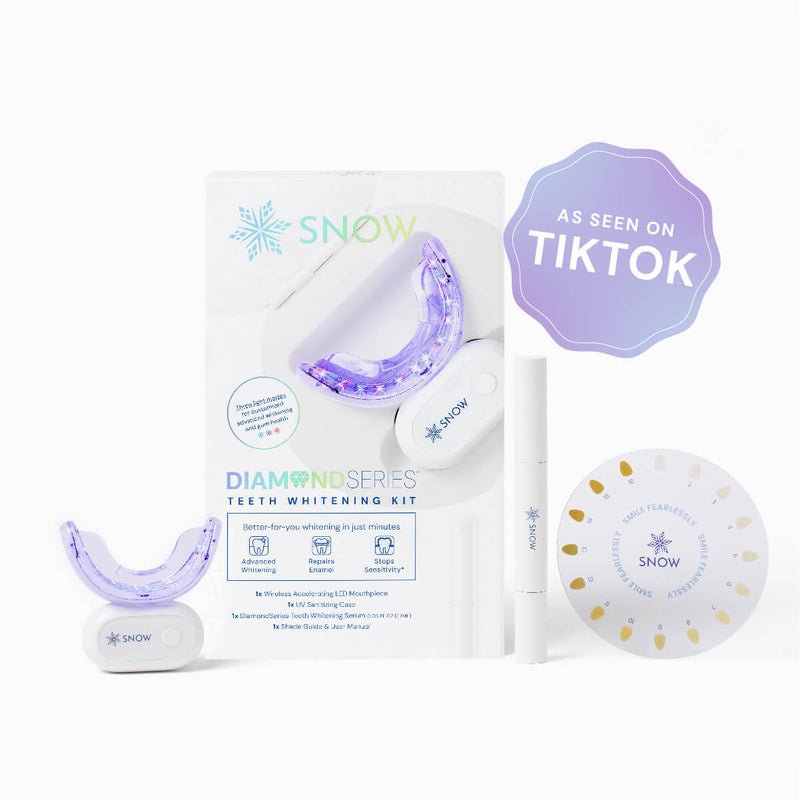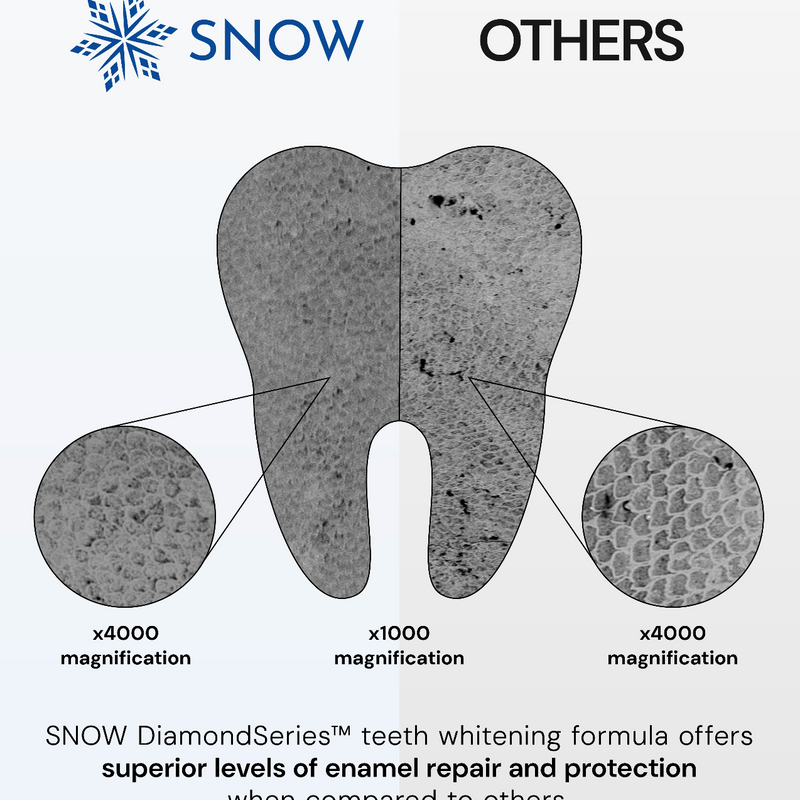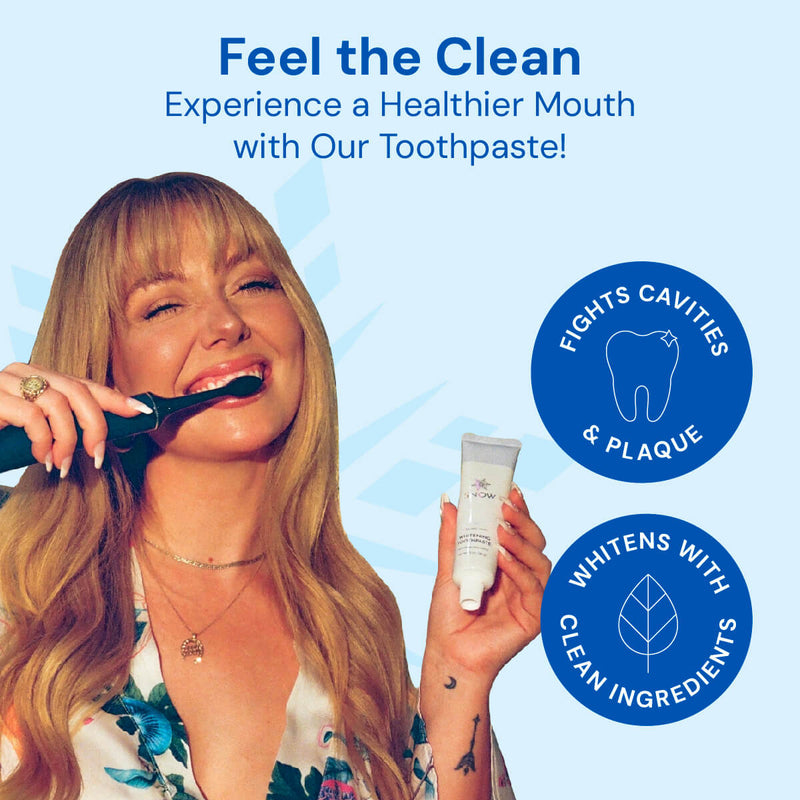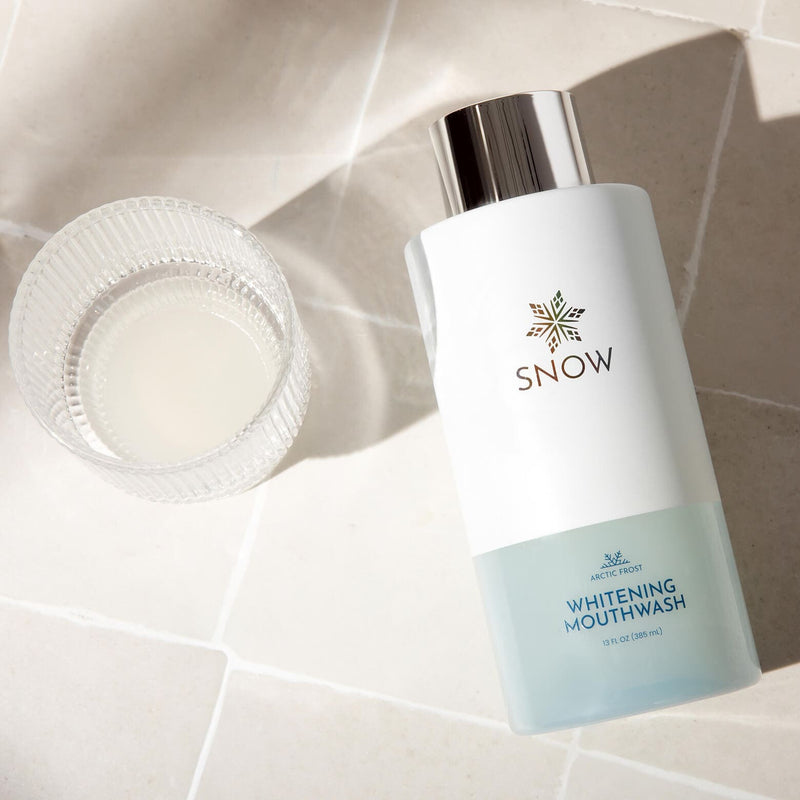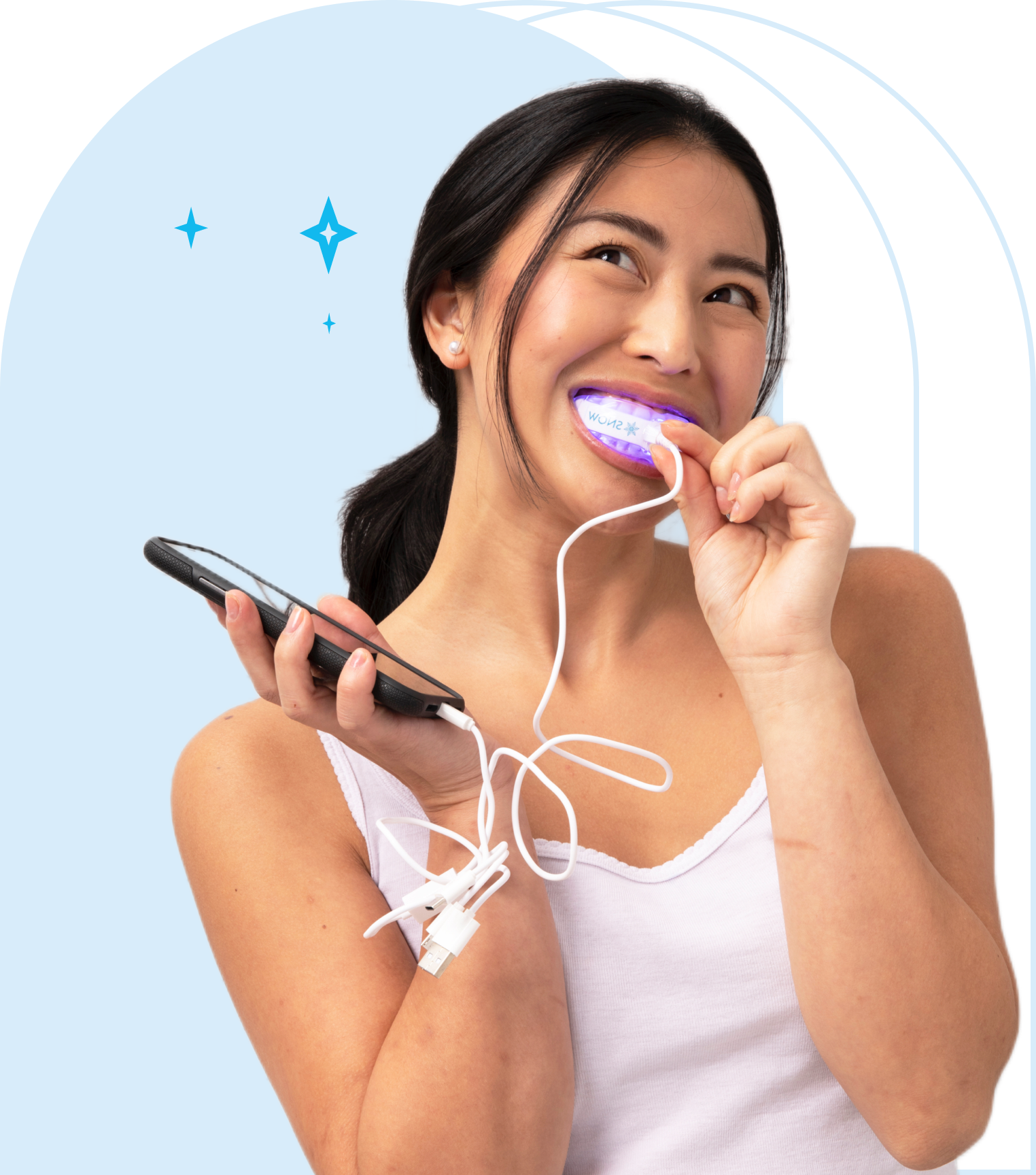How Long Does Teeth Whitening Last? Best Tips and Insights
Teeth whitening is one of the most popular cosmetic dental treatments — and for good reason. A whiter smile can instantly boost confidence, enhance appearance, and leave a lasting impression. But once your teeth are brightened, how long will they actually stay that way?
The answer depends on a few key things: the whitening method you choose, your lifestyle habits (like diet and smoking), and how well you care for your teeth afterward.
In this guide, we’ll break down what affects whitening longevity, which treatments last the longest, and what you can do to keep your results shining for as long as possible.
Key Takeaways
-
Teeth whitening duration varies based on original tooth color, degree of discoloration, and individual habits like diet and oral hygiene.
-
Professional in-office whitening treatments offer faster and longer-lasting results than most at-home kits, with effects lasting up to three years. Professional teeth whitening is the most effective method to achieve a white smile.
-
To maintain a bright smile after whitening, keep up with good oral hygiene, be cautious with staining foods and drinks, and consider touch-up treatments as needed.
What Is Teeth Whitening?
Teeth whitening is a cosmetic dental procedure that lightens the natural color of your teeth by removing surface stains and discoloration. It’s one of the most accessible ways to improve the look of your smile — and it's incredibly popular for a reason.
In fact, teeth whitening is the top dental treatment in the U.S., accounting for 32% of all dental office visits. Why? Because 99.7% of people believe a smile is an important social asset. A bright smile often signals health, youth, and confidence.
The demand isn't just limited to cosmetic trends in the U.S. — it’s global. According to a 2016 survey by a London dental clinic (reported by White Dental Beauty), 84% of people feel increased pressure to have a perfect smile, largely due to the growing visibility of adult braces, influencer culture, and celebrity dental makeovers.
Most whitening treatments work by applying a safe bleaching agent — typically hydrogen peroxide or carbamide peroxide — to the enamel. This helps lift stains and restore a cleaner, brighter appearance.
Whether you’re prepping for a big event or simply want to feel more confident day-to-day, teeth whitening offers a fast, effective, and widely available solution for refreshing your smile.
Factors Affecting Teeth Whitening Duration

The longevity of your teeth whitening results can be as unique as your smile. One of the primary factors influencing the duration is the original color of your teeth and the extent of discoloration. People with naturally darker teeth or severe stains might experience quicker fading compared to those with lighter teeth or milder discoloration. Whitening treatments are generally most effective on surface stains, while deep stains and internal stains—such as those caused by trauma or certain medications—often require professional intervention and may not respond as well to over-the-counter products.
Individual habits also play a significant role. For instance, if you frequently consume dark-colored liquids like coffee or red wine, your yellow teeth are likely to yellow faster. Similarly, smoking and poor oral hygiene can lead to quicker fading of your newly whitened teeth and affect your white teeth.
On the flip side, consistent dental hygiene and proper care at a dental clinic, along with professional dental procedures, can help extend the life of your whitening results.
Difference Between Intrinsic vs. Extrinsic Stains?
Extrinsic stains, also known as tooth stains, develop on the surface of the teeth and are primarily caused by external factors like smoking, coffee, and staining foods. These stains are usually easier to remove with whitening treatments.
Intrinsic stains, on the other hand, develop inside the teeth and can result from factors such as certain medications or trauma. Certain medications, like tetracycline, can cause intrinsic stains that are difficult to remove. Tooth whitening methods are generally more effective on extrinsic stains, making it important to know which type you are dealing with. This distinction can significantly impact the longevity of your whitening results.
Popular Teeth Whitening Methods

When it comes to achieving a brighter smile, you have several options to choose from. The most common teeth whitening methods include professional in-office treatments and at-home kits. The right method for you depends on the severity of your stains and your desired results, especially if you want your teeth whitened.
-
Professional in-office whitening treatments are often recommended for severe staining and can produce more dramatic results compared to at-home options.
-
Dental chairside procedures, also known as in office bleaching, are performed in dental offices using stronger bleaching agents and provide fast, effective results under the supervision of a dental professional.
However, at-home kits, including whitening strips and gels, can still be effective for milder stains and offer the convenience of use at your own pace. In office treatment options are also available for those seeking professional assistance.
At-Home Whitening Kits
At-home whitening kits are a popular choice for many due to their convenience and effectiveness. These kits typically include:
-
Whitening strips
-
Whitening gel
-
At home gel trays These can be used over a period of days or weeks to achieve noticeable results. Whitening strips are considered one of the most effective over-the-counter treatments for whitening teeth at home. Professional take-home kits provided by dentists often contain carbamide peroxide, a powerful bleaching agent that can maintain results for a year or more. Home teeth whitening options, including tooth whiteners, are also available for those seeking alternatives.
Over-the-counter options like whitening strips may take longer to show results and generally last about six months. For the best results, it’s advisable to use dentist-supervised at-home kits, which can offer longer-lasting effects and maintain the bright look achieved from professional treatments.
Professional In-Office Whitening
Professional in-office whitening treatments are renowned for their quick and long-lasting results. These professional teeth whitening treatments:
-
Utilize highly concentrated hydrogen peroxide or carbamide peroxide
-
Can lighten teeth by up to nine shades in a single session
-
Typically last from 40 minutes to an hour, providing a significant change in a short amount of time with laser teeth whitening and the whitening process.
These procedures are performed in the dentist's office, ensuring safety and optimal results under professional supervision.
The effects of professional in-office whitening can last from one to three years, making it a worthwhile investment for those seeking dramatic and enduring in-office whitening results. Most patients experience noticeable results and only mild sensitivity, with improvements often visible after just one session. With stronger bleaching agents than over-the-counter products, in-office treatments can provide the quickest path to a brighter smile.
Here’s a quick side-by-side comparison to help you decide:
|
Method |
Best For |
Speed |
How Long It Lasts |
Cost |
Supervised By Dentist? |
|
Professional In-Office |
Deep stains, fast results, special events |
1 visit (30–60 min) |
1–3 years |
$$$ |
yes |
|
Dentist Take-Home Kit |
Maintenance, moderate stains |
Few days to 2 weeks |
6–12 months (or more) |
$$ |
Yes |
|
Over-the-Counter Kits/Strips |
Budget-friendly, surface stains |
1–2 weeks+ |
3–6 months |
$ |
No |
Tips to Prolong Teeth Whitening Results

Achieving a whiter teeth smile is just the beginning; maintaining it requires ongoing effort and lifestyle adjustments. Whitening your teeth is just the start. To keep your teeth whitening results looking fresh, follow these essential tips:
1. Stick to Proper Oral Hygiene
Maintaining proper oral hygiene is essential for keeping your teeth white and promoting oral health. Key practices include:
-
Brushing twice a day
-
Floss regularly to remove surface stains and prevent plaque buildup
-
Attending regular dental checkups for professional cleanings that remove tartar and other deposits contributing to staining, ensuring good oral hygiene.
Using whitening toothpaste can also be beneficial in maintaining your newly whitened teeth. These toothpastes contain mild abrasives that help remove surface stains and keep your smile bright.
2. Avoid What Stains Teeth
To prolong your teeth whitening results, it’s important to be mindful of what you eat and drink. Dark-colored beverages like coffee, tea, and red wine can quickly stain teeth. Drinking water after consuming staining beverages can help rinse away particles that cause discoloration. Using a straw when drinking these beverages can help minimize contact with your teeth and reduce staining.
Additionally, avoiding colorful or acidic foods like berries and tomato sauce can help maintain your bright smile. Chewing sugar-free gum can help clean your mouth and stimulate saliva production, which keeps teeth bright. Quitting tobacco products is also advisable, as smoking can cause teeth to yellow prematurely.
3. Schedule Touch-Up Whitening
How long teeth whitening lasts depends on your habits and method used. As people age, they may experience increased yellowing of their teeth due to enamel thinning.
How often should you whiten your teeth?
-
Professional teeth whitening: Touch up every 12–18 months
-
Whitening trays or at home gel trays: Every 6–12 months
-
Over the counter products like whitening strips: Every 3–6 months
Use safe whitening gel with carbamide peroxide or hydrogen peroxide for touch-ups at home.
Additionally, consider in-chair bleaching and LED whitening methods for longer-lasting results. By making a few simple changes to your daily routine, you can achieve brighter teeth and whiten your smile shining bright for longer.
With proper care, your brighter smile can last longer — whether you use laser teeth whitening, in office treatment, or a home teeth whitening system.
Managing Tooth Sensitivity Post-Whitening
Tooth sensitivity is a common side effect of whitening treatments but can be managed effectively. The sensitivity arises from the bleaching agent’s interaction with the inner tooth structure. Using a desensitizing toothpaste before and after the whitening treatment can help reduce discomfort related to sensitive teeth.
It’s also advisable to avoid cold drinks and foods immediately after whitening to minimize sensitivity.
In some cases, nonsteroidal anti-inflammatory drugs (NSAIDs) can alleviate inflammation and discomfort associated with sensitivity. Overuse or accidental swallowing of whitening gel can lead to gastrointestinal irritation, causing a burning sensation or discomfort in the stomach and throat.
Long-Term Risks of Teeth Whitening

Teeth whitening is generally safe, especially when done under the supervision of a dental professional or when using over-the-counter products as directed. However, overuse or misuse — whether with in-office whitening, at-home gel trays, or other tooth whitening treatments — can lead to long-term oral health issues.
-
Tooth enamel damage from repeated or improper use of bleaching agents like hydrogen peroxide or carbamide peroxide
-
Tooth sensitivity, which may become permanent if whitening is overdone
-
Gum burns and irritation, especially when whitening gel contacts soft tissues
-
Uneven whitening or discoloration if used on dental restorations (e.g., crowns, veneers)
People with sensitive teeth, gum recession, or thin enamel should be especially cautious and consult a dentist before starting any whitening treatment.
According to the National Library of Medicine:
“When manufacturer’s instructions are followed, hydrogen peroxide and carbamide peroxide-based tooth whitening is safe and effective. Patients should be informed of the risks associated with tooth whitening and instructed on identification of adverse occurrences so that they may seek professional help as needed.”
— NLM, Tooth Whitening: What We Now Know
That’s why it’s so important to not only follow directions carefully but also take a few extra steps to protect your smile during and after any whitening process.
To minimize these risks and protect your oral health, always follow proper aftercare instructions provided by your dental professional. Attending regular dental checkups allows your dentist to monitor your teeth and gums, ensuring that your whitening treatments are both safe and effective. By taking these precautions, you can enjoy the benefits of a brighter smile while maintaining the health and integrity of your teeth and gums..
When to Consider Touch-Up Treatments
Teeth whitening results are not permanent, and touch-up treatments are often necessary to maintain your bright smile. The frequency of touch-ups can vary based on individual habits, such as diet and oral hygiene. For some, touch-ups may be needed every six months, while others might go longer without needing them.
If you plan to have new dental work done, such as fillings or crowns, a touch-up beforehand can ensure color matching with your natural teeth. After the initial treatment, many patients do not experience the return of stains for at least a year. This delay can be beneficial for those seeking lasting results.
Choosing the Right Whitening Product
Selecting the right whitening product is crucial for achieving the desired results. Here are some key points about whitening products:
-
Hydrogen peroxide is the most effective bleaching agent for teeth whitening.
-
Over-the-counter products like whitening strips and mouthwashes contain lower concentrations of bleaching agents and whitening agents, including peroxide based gel.
-
These over-the-counter products may take longer to show results.
For more effective results, consider custom-made teeth whitening trays from dental professionals. Custom-fitted whitening trays from a dentist generally provide better results than over-the-counter whitening kits. Always look for products that have the ADA Seal of Acceptance to ensure their safety and effectiveness.
How Long Do Different Whitening Products Last?
The duration of teeth whitening results can vary depending on the product used. Professional in-office whitening treatments can last over a year with proper maintenance. The effects of these treatments typically last between one to three years, and how long teeth whitening lasts for a significant period with the right care.
The duration of effects for various whitening products are:
-
Over-the-counter whitening strips or gels: up to six months
-
Whitening toothpaste: around three to four months
-
Whitening pens: quick but short-lived results
Common Myths About Teeth Whitening
There are several myths surrounding teeth whitening that need to be debunked. One common misconception is that teeth whitening damages tooth enamel. When performed correctly by a qualified dentist, professional teeth whitening is not harmful to enamel.
Key points about teeth whitening myths and facts:
-
UV light is often thought to be a safe method for whitening teeth, but it can pose health risks.
-
DIY methods like oil pulling with coconut oil lack scientific backing for their effectiveness in whitening teeth.
-
Crowns, veneers, and fillings cannot be whitened, which may lead to color discrepancies if natural teeth are lightened.
How Long Does Teeth Whitening Last Wrapped Up
In summary, the longevity of teeth whitening results depends on various factors, including the type of stains, individual habits, and the method used. Professional in-office treatments offer quicker and longer-lasting results, while at-home kits provide a convenient alternative for maintaining a bright smile.
By following proper oral hygiene habits and avoiding staining foods and drinks, you can prolong the effects of your teeth whitening treatment. Remember, touch-up treatments may be necessary to maintain your results, and choosing the right whitening product is crucial for achieving the best outcomes. Here’s to a brighter, whiter smile!
Frequently Asked Questions
How long does professionally whitened teeth last?
Teeth whitening typically lasts from one to three years for professional treatments, whereas at-home kits and over-the-counter products tend to last about six months to a year. So, keep that in mind when planning your bright smile!
Do teeth go back to normal after whitening?
Yes, over time, teeth can gradually return to their original shade due to factors like diet, lifestyle habits, and natural aging. Maintaining good oral hygiene and avoiding staining foods and drinks can help prolong the whiteness.
Is it worth getting teeth whitened?
Professional teeth whitening is worth it for many people seeking a brighter, more confident smile. It provides faster, more noticeable, and longer-lasting results compared to over-the-counter products, making it a popular cosmetic dental procedure.
Can teeth be permanently whitened?
Teeth whitening is not permanent. While professional treatments can last for years with proper care, teeth will eventually accumulate new stains. Regular touch-ups and good oral hygiene are necessary to maintain a bright smile.
Try SNOW now and let's brighten that smile today!
Did our blog meet your needs? You might also find our other guides helpful:
- Best Teeth Whitening Products for Sensitive Teeth
- Professional Teeth Whitening
- Permanent Teeth Whitening
- Types of Teeth Whitening Options
- Deep Teeth Whitening
- How to Whiten Between Teeth
- What Is Teeth Whitening?
- How to Keep Teeth White
- How White Are My Teeth?
- Should I Whiten My Teeth?
- Are White Teeth Attractive?
- How to Get a White Smile
- Getting Rid of White Spots on Teeth After Whitening
- How to Remove White Spots on Teeth at Home
- White Hard Stuff on Teeth

























































